
'We didn't need to merge with HEBO, but we wanted to. We were already working closely together and offering supplementary services, so we saw the benefits of combining our strengths and resources to be stronger in the market.'
- Peter Leenheer, Bonn & Mees
Bonn & Mees is a family business. Is another generation already eager to take the helm? – Peter: ‘I am the fourth generation in the company. My father never pushed me to take over the baton from him. I worked a lot as a DJ when I was young. At one point he did ask: if you want to go for it, now is the time. Then I hung up my DJ equipment and went for it. I, too, absolutely do not expect my children to take over. Above all, they should do what they enjoy. And besides, for now, I am still having a lot of fun in my work.’
Future
Peter: ‘What am I most proud of? This is very clear: our motivated people and our very good equipment. This allows us to deliver reliability and quality to our clients.’
When we ask Peter about what the best jobs have been so far, the best stories come up. – Peter: ‘A job that you will always remember is the installation of the Erasmus Bridge. That was a super cool job. We glued all the road surfaces together. At that moment, you don't realise it will become such an icon later on. One of the most enjoyable jobs was putting back the counterweight of the Hef. We took the Hef out with two sheerlegs and after two years of repairs, we put it back in with just the Matador 3. And an impressive job was lifting hulls from China with five sheerlegs at a time. Those were masterpieces.”
Masterpieces
In 2023, Bonn & Mees merged with their main competitor HEBO. How did that come about? Peter: ‘We didn't need to merge with HEBO, but we wanted to. We were already working closely together and offering supplementary services, so we saw the benefits of combining our strengths and resources to be stronger in the market. It was a strategic choice to strengthen our position and secure our future. Of course, the merger has not been without controversy. We were 135 when we merged. For the crew, that was very crazy. You have to bring two cultures together and that takes time. But we are well on our way to becoming one big family.’
Bonn & Mees x HEBO
When we look out the window of the World Port Center, we regularly see you sailing by. It is an imposing sight when you are on the 15th floor and suddenly see the top of a crane passing by. Where do we see you most often? ‘Theoretically, we may operate globally, but our focus is on Europe. The port of Rotterdam is our core business, and 80% of our turnover comes from a 50 km radius around Rotterdam. But we also go to Norway, Denmark, England, Ireland, France, Germany and Belgium. So you see us everywhere!’

Core business in Rotterdam
A saying on board is: ‘You always know what time you start, but never what time you finish.’ This is because it is unpredictable work. Still, we are curious to know what an ideal job looks like? Peter tells: ‘An ideal job runs from A to Z by the book, but in practice this is rarely the case. We often face unexpected situations. For example, we sometimes get drawings that are incorrect or obstacles that get in the way. Safety is hugely important to us, so if something is not safe, we stop immediately. Therefore, it is incredibly important to do thorough preparations, with the right people and materials. Safety and accuracy are crucial. Our people must be able to work safely and well, and everything must be right: both on paper and in practice.’
Ideal job
What is the division of roles on board? – Peter: ‘The most important man on board is always the skipper. The skipper of the floating sheerlegs is actually the captain of the ship. His will is law. He may also overrule us as owners, so to speak, if he feels a situation is not safe. Then he hits the red button and says: ‘Stop, this is not safe.’ Even if we say we have calculated that something can be done, if he does not think it is safe, we stop and talk about it to come to a solution. The skipper is the boss on board. He collaborates with auxiliary skippers and seamen. Among other things, they make sure that all lifting equipment is hung in the right place.’
When we were on board, we saw that the cabin is ultra clean. – Peter: ‘That's right! On board, in the indoor areas, shoes literally come off and everyone keeps the living space tidy. The crew is often on board more hours a week than they are at home, so that's nice.’

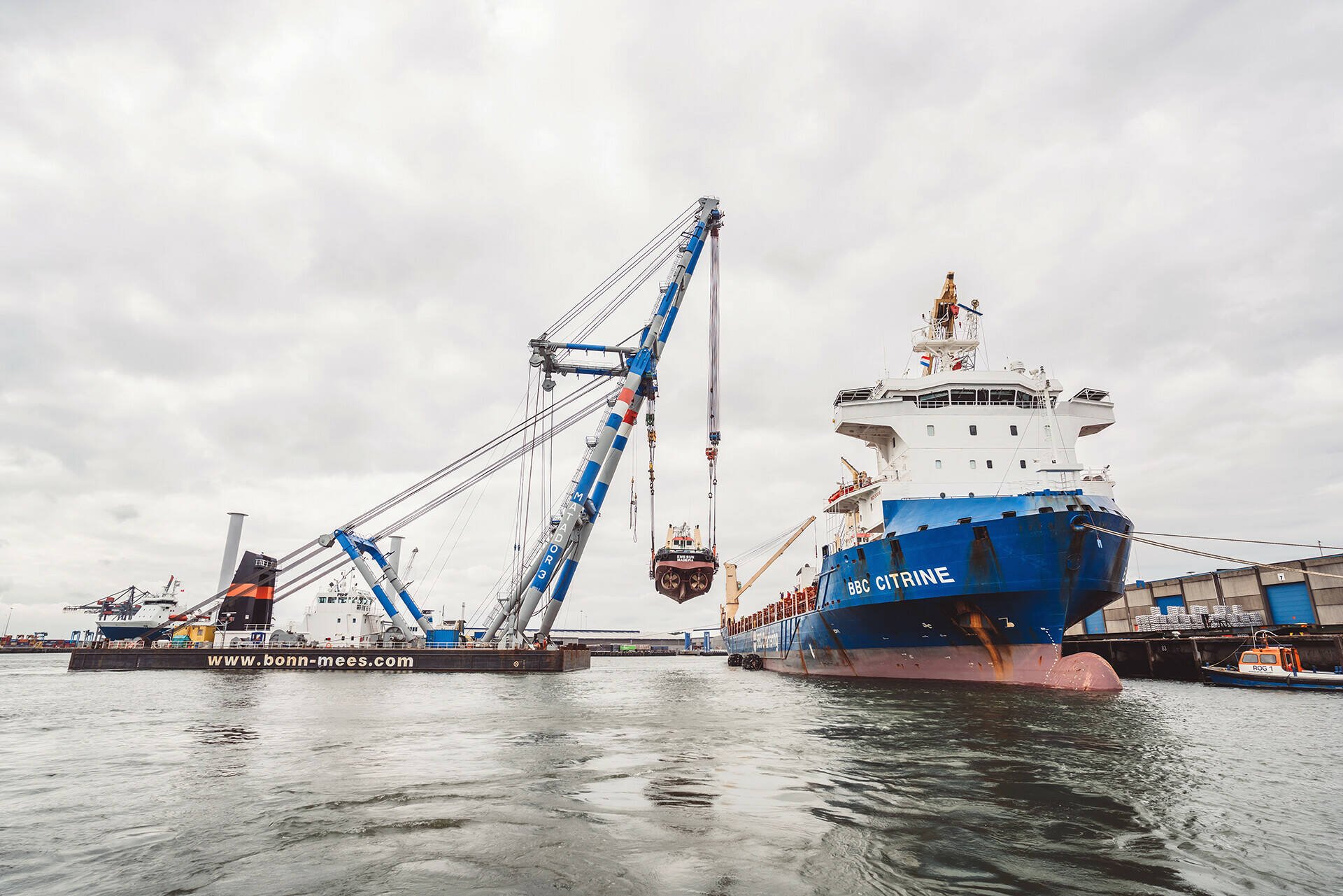
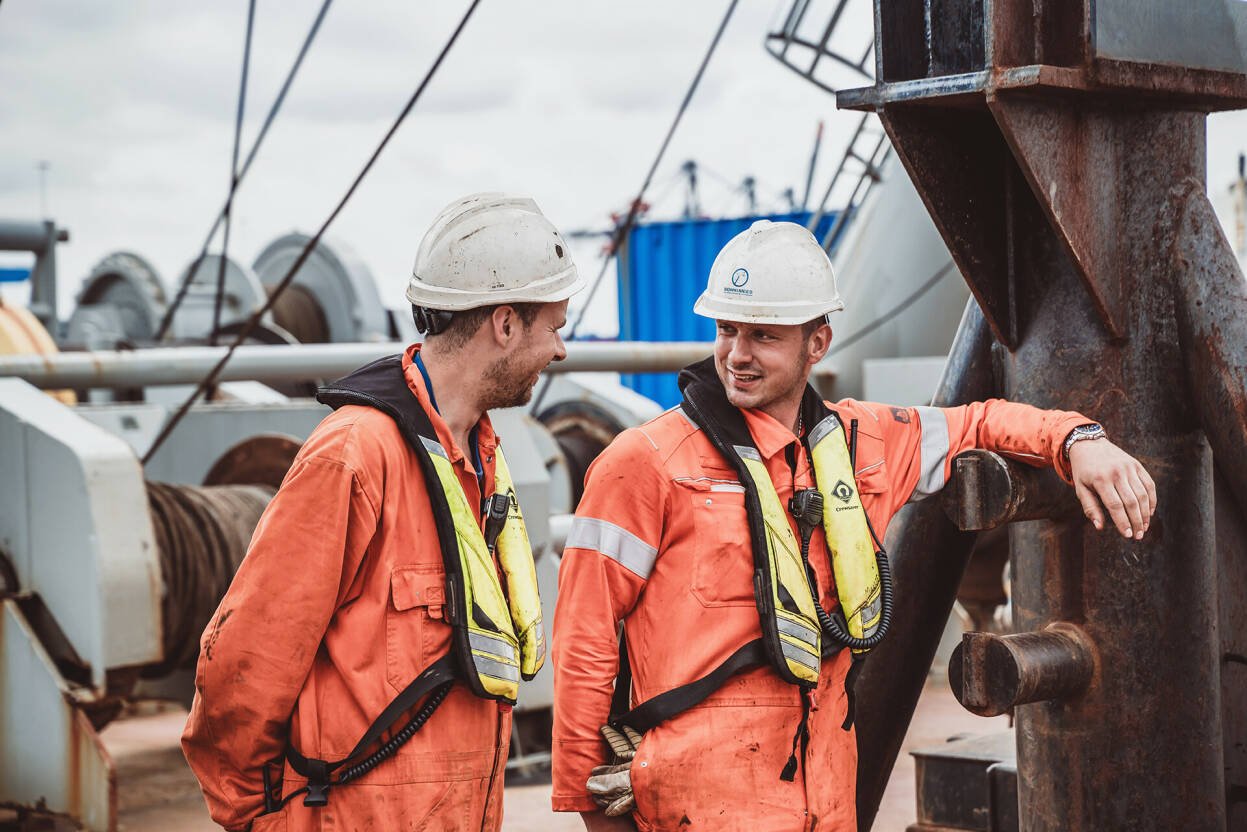
From hulls to generators
Bonn & Mees operates floating cranes. They hire out cranes with skilled crews. Peter: ‘So it's not like you can rent a crane from us and take it with you. We meet all the certificates and requirements, so you have to have the right people on such a crane to do the job.’
What kind of objects do you lift? – Peter: ‘These could be transformers, generators, loading arms for refineries, or yachts, for example. We also work with shipyards to lift parts of ships in the right place so they can be welded together. We also do salvage work if a ship sinks somewhere in the world.’
On board
From shipyard to sheerlegs operator
Bonn & Mees is named after its original founders. Can you take us back in time a bit? Peter: ‘The company was founded in 1888 by Mr Bonn and Mr Mees. One had good ideas and the other the money. They started a shipyard and built ships. A sheerlegs was also built for their own use. That started primitively, but they became bigger and bigger cranes. The shipyard grew until yet another move was in sight. Then the Maas Tunnel was built. The tunnel tube on the south side emerged exactly where our shipyard was. Then the Leenheer family, the owner at the time, pulled the plug as far as shipyards were concerned and Bonn & Mees only continued to operate floating sheerlegs. Over the years, the company grew and specialised in floating sheerlegs. The first hefty sheerlegs was the Matador, then came the Matador 2 and a major milestone was the construction of the Matador 3 in 2002, with a lifting capacity of 1,800 tonnes. This made our company a key player in the international heavy lifting market.’
About Bonn & Mees
Bonn & Mees, a maritime service provider, specialises in the rental and operation of floating cranes, also known as floating sheerlegs. They operate from two locations in Rotterdam: a head office and a lift terminal. They offer various solutions for heavy lifting tasks within the maritime sector. Since July 2023, they have merged with HEBO, meaning that two already closely cooperating parties have now officially joined forces.
Peter tells: ‘I have been with Bonn & Mees since 1988, and before that the company had been around for 100 years. I missed the first 100 years, but I have experienced the last 36 from start to finish. Until last year, I owned Bonn & Mees, but since the merger with HEBO, I am now one of the three owners of the new company.’
An impression of Bonn & Mees
Scroll down
For this edition of Behind the Scenes, Bonn & Mees generously welcomed us and took us into the world of lifting services. We were able to watch their daily operations and spoke to Peter Leenheer, owner of the lifting services company Bonn & Mees.
If you venture near the port of Rotterdam, you regularly see them sailing by: floating sheerlegs. These are floating pontoons with a crane on top, indispensable for heavy or complex lifting operations in the maritime sector. For example, they are used to construct or repair bridges, for salvage work, and for loading or unloading objects. Watch the video below to get an impression of a day in the life aboard a ‘bokkenboer’ – sheerlegs – as we call it in the Rotterdam vernacular.
In the ‘Behind the Scenes’ series, we explore activity in the port of Rotterdam. We get an exclusive look at the day-to-day operations and processes of several companies at Europe's largest port. In this edition, we board a floating sheerlegs and dive into the world of maritime lifting services.
Behind the scenes: the lifting services
BEHIND THE SCENES
Bonn & Mees is a family business. Is another generation already eager to take the helm? – Peter: ‘I am the fourth generation in the company. My father never pushed me to take over the baton from him. I worked a lot as a DJ when I was young. At one point he did ask: if you want to go for it, now is the time. Then I hung up my DJ equipment and went for it. I, too, absolutely do not expect my children to take over. Above all, they should do what they enjoy. And besides, for now, I am still having a lot of fun in my work.’
Future
Peter: ‘What am I most proud of? This is very clear: our motivated people and our very good equipment. This allows us to deliver reliability and quality to our clients.’
When we ask Peter about what the best jobs have been so far, the best stories come up. – Peter: ‘A job that you will always remember is the installation of the Erasmus Bridge. That was a super cool job. We glued all the road surfaces together. At that moment, you don't realise it will become such an icon later on. One of the most enjoyable jobs was putting back the counterweight of the Hef. We took the Hef out with two sheerlegs and after two years of repairs, we put it back in with just the Matador 3. And an impressive job was lifting hulls from China with five sheerlegs at a time. Those were masterpieces.”
Masterpieces
In 2023, Bonn & Mees merged with their main competitor HEBO. How did that come about? Peter: ‘We didn't need to merge with HEBO, but we wanted to. We were already working closely together and offering supplementary services, so we saw the benefits of combining our strengths and resources to be stronger in the market. It was a strategic choice to strengthen our position and secure our future. Of course, the merger has not been without controversy. We were 135 when we merged. For the crew, that was very crazy. You have to bring two cultures together and that takes time. But we are well on our way to becoming one big family.’
Bonn & Mees x HEBO
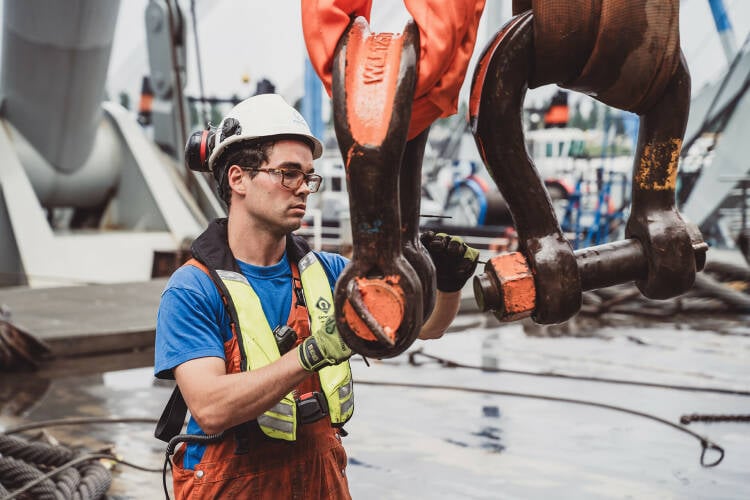
When we look out the window of the World Port Center, we regularly see you sailing by. It is an imposing sight when you are on the 15th floor and suddenly see the top of a crane passing by. Where do we see you most often? ‘Theoretically, we may operate globally, but our focus is on Europe. The port of Rotterdam is our core business, and 80% of our turnover comes from a 50 km radius around Rotterdam. But we also go to Norway, Denmark, England, Ireland, France, Germany and Belgium. So you see us everywhere!’
Core business in Rotterdam

About Bonn & Mees
Bonn & Mees operates floating cranes. They hire out cranes with skilled crews. Peter: ‘So it's not like you can rent a crane from us and take it with you. We meet all the certificates and requirements, so you have to have the right people on such a crane to do the job.’
What kind of objects do you lift? – Peter: ‘These could be transformers, generators, loading arms for refineries, or yachts, for example. We also work with shipyards to lift parts of ships in the right place so they can be welded together. We also do salvage work if a ship sinks somewhere in the world.’
From hulls to generators
A saying on board is: ‘You always know what time you start, but never what time you finish.’ This is because it is unpredictable work. Still, we are curious to know what an ideal job looks like? Peter tells: ‘An ideal job runs from A to Z by the book, but in practice this is rarely the case. We often face unexpected situations. For example, we sometimes get drawings that are incorrect or obstacles that get in the way. Safety is hugely important to us, so if something is not safe, we stop immediately. Therefore, it is incredibly important to do thorough preparations, with the right people and materials. Safety and accuracy are crucial. Our people must be able to work safely and well, and everything must be right: both on paper and in practice.’
Ideal job
What is the division of roles on board? – Peter: ‘The most important man on board is always the skipper. The skipper of the floating sheerlegs is actually the captain of the ship. His will is law. He may also overrule us as owners, so to speak, if he feels a situation is not safe. Then he hits the red button and says: ‘Stop, this is not safe.’ Even if we say we have calculated that something can be done, if he does not think it is safe, we stop and talk about it to come to a solution. The skipper is the boss on board. He collaborates with auxiliary skippers and seamen. Among other things, they make sure that all lifting equipment is hung in the right place.’
When we were on board, we saw that the cabin is ultra clean. – Peter: ‘That's right! On board, in the indoor areas, shoes literally come off and everyone keeps the living space tidy. The crew is often on board more hours a week than they are at home, so that's nice.’
On board
Bonn & Mees, a maritime service provider, specialises in the rental and operation of floating cranes, also known as floating sheerlegs. They operate from two locations in Rotterdam: a head office and a lift terminal. They offer various solutions for heavy lifting tasks within the maritime sector. Since July 2023, they have merged with HEBO, meaning that two already closely cooperating parties have now officially joined forces.
Peter tells: ‘I have been with Bonn & Mees since 1988, and before that the company had been around for 100 years. I missed the first 100 years, but I have experienced the last 36 from start to finish. Until last year, I owned Bonn & Mees, but since the merger with HEBO, I am now one of the three owners of the new company.’
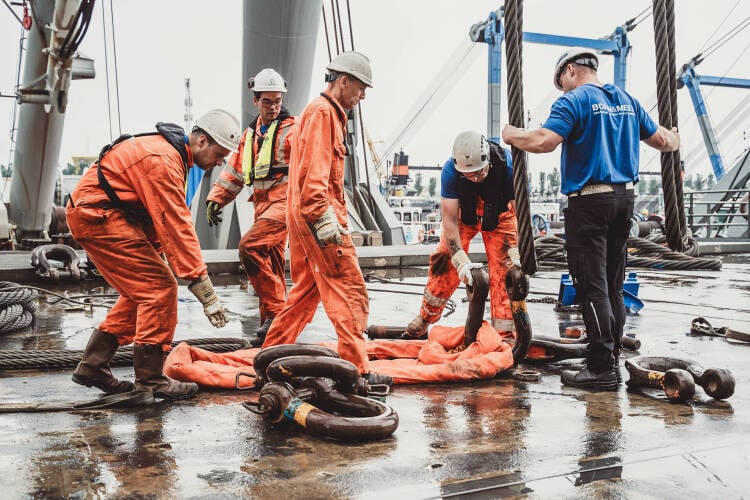
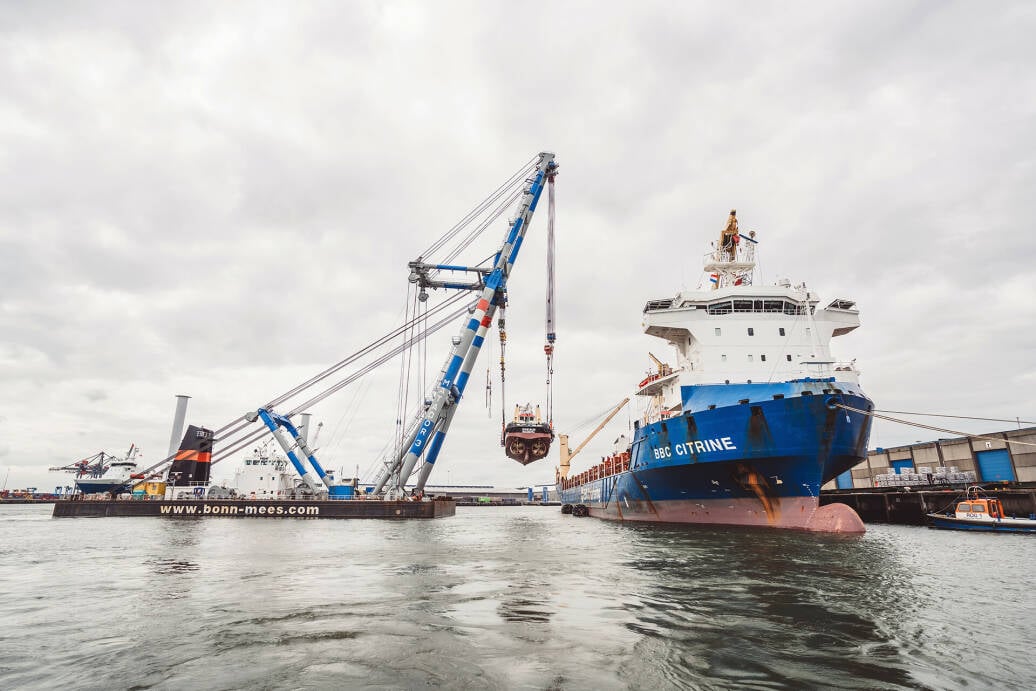
'We didn't need to merge with HEBO, but we wanted to. We were already working closely together and offering supplementary services, so we saw the benefits of combining our strengths and resources to be stronger in the market.'
- Peter Leenheer, Bonn & Mees
Bonn & Mees is named after its original founders. Can you take us back in time a bit? Peter: ‘The company was founded in 1888 by Mr Bonn and Mr Mees. One had good ideas and the other the money. They started a shipyard and built ships. A sheerlegs was also built for their own use. That started primitively, but they became bigger and bigger cranes. The shipyard grew until yet another move was in sight. Then the Maas Tunnel was built. The tunnel tube on the south side emerged exactly where our shipyard was. Then the Leenheer family, the owner at the time, pulled the plug as far as shipyards were concerned and Bonn & Mees only continued to operate floating sheerlegs. Over the years, the company grew and specialised in floating sheerlegs. The first hefty sheerlegs was the Matador, then came the Matador 2 and a major milestone was the construction of the Matador 3 in 2002, with a lifting capacity of 1,800 tonnes. This made our company a key player in the international heavy lifting market.’
From shipyard to sheerlegs operator
For this edition of Behind the Scenes, Bonn & Mees generously welcomed us and took us into the world of lifting services. We were able to watch their daily operations and spoke to Peter Leenheer, owner of the lifting services company Bonn & Mees.
An impression of Bonn & Mees

If you venture near the port of Rotterdam, you regularly see them sailing by: floating sheerlegs. These are floating pontoons with a crane on top, indispensable for heavy or complex lifting operations in the maritime sector. For example, they are used to construct or repair bridges, for salvage work, and for loading or unloading objects. Watch the video below to get an impression of a day in the life aboard a ‘bokkenboer’ – sheerlegs – as we call it in the Rotterdam vernacular.
In the ‘Behind the Scenes’ series, we explore activity in the port of Rotterdam. We get an exclusive look at the day-to-day operations and processes of several companies at Europe's largest port. In this edition, we board a floating sheerlegs and dive into the world of maritime lifting services.
BEHIND THE SCENES